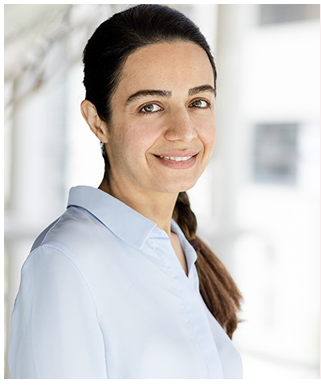Date & time
3 p.m. – 4 p.m.
Elmira Moosavi
This event is free
John Molson Building
1450 Guy
Room MB S1.235
Yes - See details
 Elmira Moosavi
Elmira Moosavi
Knowledge of thermodynamics and phase equilibria is not only very important from a fundamental point of view (phase transformation, solidification, corrosion and oxidation, etc.) but also indispensable for the successful improvement and design of materials and manufacturing processes.
It aids in understanding and predicting material behavior and processes for many applications, e.g., metal production, recycling, emissions mitigation, energy storage, specialty glass and ceramics, etc. By optimizing industrial processes using thermodynamic principles, energy consumption can be reduced, and waste and pollution minimized, contributing to sustainability.
In addition, thermodynamic modeling enhances process control and efficiency while reducing costs and time. In our research group, we aim to enhance our understanding of the thermodynamic properties of inorganic materials, particularly critical and strategic materials. We also utilize this knowledge to advance our understanding of metal production processes for both ferrous and non-ferrous industries, with the goal of increasing the sustainability and competitiveness of these sectors. We employ a systematic methodology that integrates modeling and experimental approaches.
Our experiments include phase diagram measurements and high-temperature solid-liquid-gas interactions followed by chemical and physical characterization. Alongside experimental work, we perform thermodynamic modeling, develop structural physical models, and employ artificial intelligence to enhance our predictive capabilities. Examples of our projects include developing thermodynamic databases for critical and rare metals. We are advancing the Polyhedron Model to estimate the thermodynamic properties of oxides with higher accuracy.
Additionally, we have created a neural network model to predict the final phosphorus content in steel from a scrap-based electric arc furnace, demonstrating excellent predictive ability. We collaborate with various universities and industries, including the University of Toronto, McGill University, Finkl Steel Sorel, Rio Tinto, and ArcelorMittal. This presentation aims to inspire graduate students by showcasing the dynamic blend of thermodynamics and materials design/processing, emphasizing multidisciplinary approaches to solving scientific and engineering challenges.
Elmira Moosavi has been an associate professor at École de Technologie Supérieure (ÉTS) since July, 2021, and holds a status-only associate professor role at the University of Toronto. She has actively contributed as the chair and a member of the Executive Committee of the Pyrometallurgy Section of MetSoc of CIM since December 2019.
Elmira completed her PhD at McGill University, focusing on developing a comprehensive thermodynamic database for oxysulfide systems. Her postdoctoral research at McGill University and the Norwegian University of Science and Technology involved dynamic process simulation models, metal recycling, and emission reduction.
Her industrial experience includes serving as a senior specialist in R&D at Aurubis in Germany (a global leader in copper production), optimizing metallurgical and recycling processes, and as a principal researcher at Tata Steel in the Netherlands, enhancing process efficiency and emissions mitigation.
Currently, her research focuses on the thermodynamics of inorganic materials and their applications in sustainable metal production. This includes thermodynamic modeling and experiments on complex chemical systems containing critical and strategic metals, developing structural physical models to predict thermodynamic properties, and using deep learning models to enhance our predictive ability of process and materials behaviors.
© Concordia University